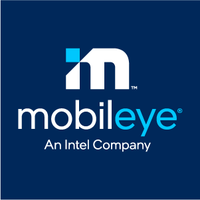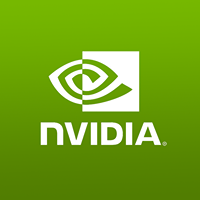Intel's Future in Jeopardy: A Chip Giant at a Crossroads
March 3, 2025, 9:55 pm

Location: Israel, Jerusalem District, Jerusalem
Employees: 1001-5000
Founded date: 1999
Total raised: $1.26B
TSMC
Location: Taiwan
Intel, once the titan of the semiconductor industry, now finds itself in a precarious position. The landscape is shifting. Rivals like Taiwan Semiconductor Manufacturing Company (TSMC) and Broadcom are circling, eyeing potential deals that could fracture the storied American chipmaker. This isn’t just a corporate reshuffle; it’s a seismic shift in the tech world.
Intel’s divisions are under scrutiny. Broadcom is reportedly interested in Intel’s chip design and marketing unit. TSMC, on the other hand, is contemplating the acquisition of some or all of Intel’s manufacturing plants. This isn’t mere speculation; it’s a reflection of Intel’s struggles to maintain its once-unassailable market position.
Intel operates through three main segments. The first is the Products Division. This division has a rich history of designing chips, but it now faces fierce competition from Advanced Micro Devices (AMD). The battle for supremacy in the personal computer and data center markets is fierce. AMD has been nipping at Intel’s heels, capturing market share and attention.
The winds of change are blowing. Big cloud companies are shifting their spending towards AI chips made by Nvidia. This shift has drained demand for Intel’s traditional offerings. The company’s PC business, which includes its Core series chips and Atom processors, is feeling the pinch. Even the Xeon series, designed for servers, is not immune to this downturn.
In a stark admission of its challenges, Intel scrapped its 2024 forecast for Gaudi AI chips. The anticipated sales of over $500 million were deemed unrealistic due to slower-than-expected adoption. This is a telling sign of the times. The once-reliable revenue streams are drying up.
Next, we have the Intel Foundry. This division was restructured to bolster Intel’s contract chip-making business. It aims to attract investment and compete with established players. Intel Foundry offers custom chip-making services, not just for its products but also for external customers. It boasts ten manufacturing sites, including six wafer fabrication facilities.
However, the foundry business has faced setbacks. Earlier tests with Broadcom did not yield the desired results. Nvidia and Broadcom are currently running tests with Intel, but the outcome remains uncertain. The stakes are high. A successful partnership could provide a much-needed revenue boost and validate Intel’s foundry ambitions.
Intel’s challenges extend beyond its divisions. The company has delayed its ambitious $28 billion chip fab plant in Ohio. Projects in Germany and Poland have also been paused. This is a strategic retreat, a tightening of the belt as Intel prioritizes key initiatives. The company reported a staggering $13.41 billion operating loss in 2024, a significant increase from the previous year’s $6.96 billion loss. Executives project that the chip-making business will only break even by 2027. This timeline is a stark reminder of the uphill battle ahead.
The third segment, labeled “All Others,” includes businesses like Altera and Mobileye Global. Altera, known for its programmable chips, is a standalone entity within Intel. Recent reports indicate that buyout firm Silver Lake is in exclusive discussions to acquire a majority stake in Altera. This could signal a shift in Intel’s strategy, as it seeks to streamline operations and focus on core competencies.
Mobileye Global, a leader in self-driving technology, remains a crucial asset for Intel. The company has confirmed it will not divest its majority stake in Mobileye, indicating a commitment to this burgeoning sector. However, even this segment is not immune to challenges. Revenue from “All Others” fell by about 32% to $3.82 billion in 2024. This decline underscores the broader struggles facing Intel.
The implications of these developments are profound. Intel’s position as a market leader is under threat. The interest from TSMC and Broadcom highlights the urgency of the situation. The chip industry is evolving rapidly, and Intel must adapt or risk being left behind.
The question looms large: Can Intel reinvent itself? The company has a storied history, but history alone won’t secure its future. It must innovate, adapt, and respond to the changing tides. The competition is fierce, and the stakes are high.
In conclusion, Intel stands at a crossroads. The company must navigate a complex landscape filled with challenges and opportunities. The interest from rivals signals a potential reshaping of the semiconductor industry. Intel’s future hinges on its ability to respond to these pressures. The clock is ticking, and the world is watching. Will Intel rise to the occasion, or will it become a cautionary tale in the annals of tech history? Only time will tell.
Intel’s divisions are under scrutiny. Broadcom is reportedly interested in Intel’s chip design and marketing unit. TSMC, on the other hand, is contemplating the acquisition of some or all of Intel’s manufacturing plants. This isn’t mere speculation; it’s a reflection of Intel’s struggles to maintain its once-unassailable market position.
Intel operates through three main segments. The first is the Products Division. This division has a rich history of designing chips, but it now faces fierce competition from Advanced Micro Devices (AMD). The battle for supremacy in the personal computer and data center markets is fierce. AMD has been nipping at Intel’s heels, capturing market share and attention.
The winds of change are blowing. Big cloud companies are shifting their spending towards AI chips made by Nvidia. This shift has drained demand for Intel’s traditional offerings. The company’s PC business, which includes its Core series chips and Atom processors, is feeling the pinch. Even the Xeon series, designed for servers, is not immune to this downturn.
In a stark admission of its challenges, Intel scrapped its 2024 forecast for Gaudi AI chips. The anticipated sales of over $500 million were deemed unrealistic due to slower-than-expected adoption. This is a telling sign of the times. The once-reliable revenue streams are drying up.
Next, we have the Intel Foundry. This division was restructured to bolster Intel’s contract chip-making business. It aims to attract investment and compete with established players. Intel Foundry offers custom chip-making services, not just for its products but also for external customers. It boasts ten manufacturing sites, including six wafer fabrication facilities.
However, the foundry business has faced setbacks. Earlier tests with Broadcom did not yield the desired results. Nvidia and Broadcom are currently running tests with Intel, but the outcome remains uncertain. The stakes are high. A successful partnership could provide a much-needed revenue boost and validate Intel’s foundry ambitions.
Intel’s challenges extend beyond its divisions. The company has delayed its ambitious $28 billion chip fab plant in Ohio. Projects in Germany and Poland have also been paused. This is a strategic retreat, a tightening of the belt as Intel prioritizes key initiatives. The company reported a staggering $13.41 billion operating loss in 2024, a significant increase from the previous year’s $6.96 billion loss. Executives project that the chip-making business will only break even by 2027. This timeline is a stark reminder of the uphill battle ahead.
The third segment, labeled “All Others,” includes businesses like Altera and Mobileye Global. Altera, known for its programmable chips, is a standalone entity within Intel. Recent reports indicate that buyout firm Silver Lake is in exclusive discussions to acquire a majority stake in Altera. This could signal a shift in Intel’s strategy, as it seeks to streamline operations and focus on core competencies.
Mobileye Global, a leader in self-driving technology, remains a crucial asset for Intel. The company has confirmed it will not divest its majority stake in Mobileye, indicating a commitment to this burgeoning sector. However, even this segment is not immune to challenges. Revenue from “All Others” fell by about 32% to $3.82 billion in 2024. This decline underscores the broader struggles facing Intel.
The implications of these developments are profound. Intel’s position as a market leader is under threat. The interest from TSMC and Broadcom highlights the urgency of the situation. The chip industry is evolving rapidly, and Intel must adapt or risk being left behind.
The question looms large: Can Intel reinvent itself? The company has a storied history, but history alone won’t secure its future. It must innovate, adapt, and respond to the changing tides. The competition is fierce, and the stakes are high.
In conclusion, Intel stands at a crossroads. The company must navigate a complex landscape filled with challenges and opportunities. The interest from rivals signals a potential reshaping of the semiconductor industry. Intel’s future hinges on its ability to respond to these pressures. The clock is ticking, and the world is watching. Will Intel rise to the occasion, or will it become a cautionary tale in the annals of tech history? Only time will tell.
